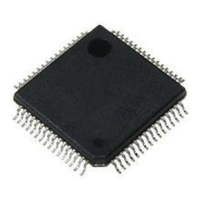Introduction
1-18 Copyright © 2005-2008 ARM Limited. All rights reserved. ARM DDI 0337G
Non-Confidential
Unrestricted Access
1.6 Store buffers
The processor contains two store buffers:
• Cortex-M3 core LSU store buffer for immediate offset opcode.
• Bus-matrix store buffer for wait states and unaligned transactions.
The core store buffer optimizes the case of
STR rx,[ry,#imm],
which is common in
compiled code. This means that the next opcode can overlap the store's data phase,
reducing the opcode to a single cycle from the perspective of the pipeline.
The bus-matrix interconnect within the processor manages the unaligned behavior of
the core and bit-banding. The bus-matrix store buffer is useful for resolving system
wait-states and unaligned accesses that are split over multiple transactions.
Only transactions marked as bufferable use the store buffers. Stacking operations are
inherently non-bufferable and therefore also do not use either of the buffers.

